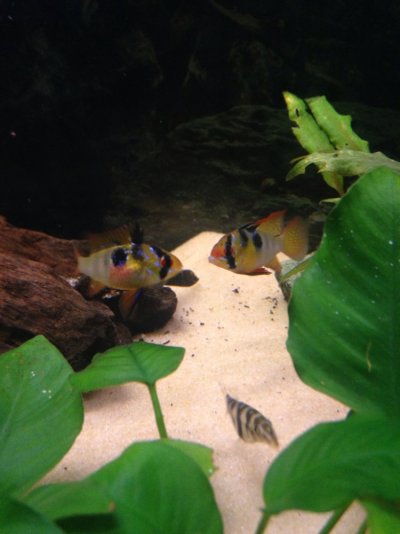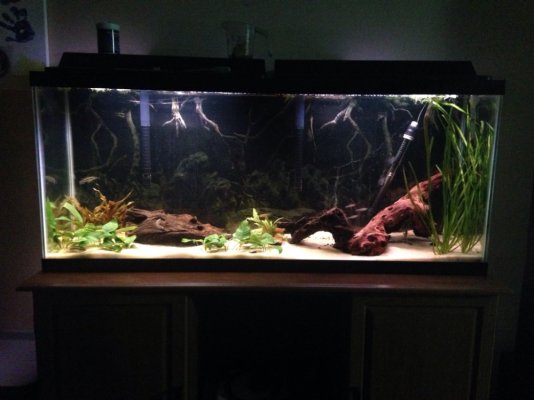Chronos313
Aquarium Advice Addict
So it looks like I finally managed to get a pairing of Blue Rams. The male never leaves this females side and chases the other female away. He's not even bothered by the male and female kribensis in my tank either. I have a lightly planted tank with driftwood on either side. And I also have a piece of slate on one side. Any thoughts as to what else should be placed in the tank to make it a suitable place to hopefully have them lay eggs and eventually have fry. 

Sent from my iPhone using Aquarium Advice


Sent from my iPhone using Aquarium Advice
